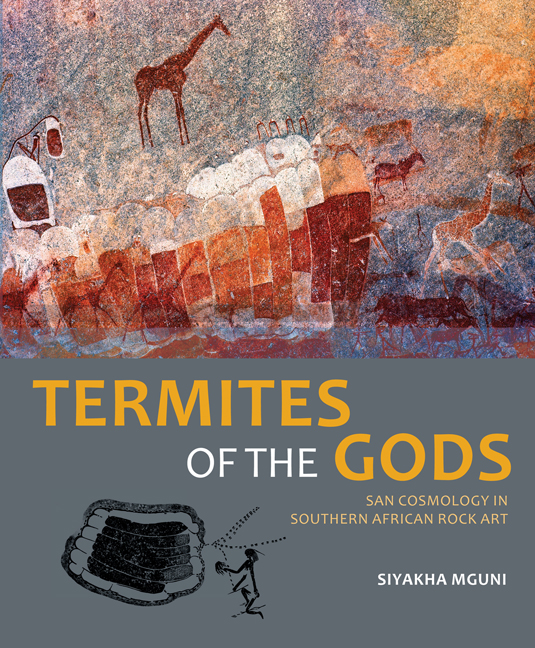Book contents
- Frontmatter
- Dedication
- Contents
- Acknowledgements
- Foreword
- Maps
- Explanatory notes
- Preface: Searching the pasts
- Introduction
- Chapter 1 Ancient mysteries on rocks
- Chapter 2 Meaning in San rock art
- Chapter 3 Tricksters, potency and dance
- Chapter 4 Ways of seeing San rock art
- Chapter 5 Probing deep into formlings
- Chapter 6 Formlings and San cosmological belief
- Chapter 7 Symbolic theatres of San cosmos
- Notes
- List of maps and figures
- Picture credits
- References
- Index
Chapter 6 - Formlings and San cosmological belief
Published online by Cambridge University Press: 21 April 2018
- Frontmatter
- Dedication
- Contents
- Acknowledgements
- Foreword
- Maps
- Explanatory notes
- Preface: Searching the pasts
- Introduction
- Chapter 1 Ancient mysteries on rocks
- Chapter 2 Meaning in San rock art
- Chapter 3 Tricksters, potency and dance
- Chapter 4 Ways of seeing San rock art
- Chapter 5 Probing deep into formlings
- Chapter 6 Formlings and San cosmological belief
- Chapter 7 Symbolic theatres of San cosmos
- Notes
- List of maps and figures
- Picture credits
- References
- Index
Summary
In a work of art any element however paltry has to be firmly related to the total structure in a complex web of cross ties radiating across the entire picture plane.
Having identified the subject of formlings through defining their forms and comparing their morphology and decorative attributes against biological phenomena, I state that formlings are representations of termitaria. In a few definitive examples the flying termites are even depicted in association with formlings. In some marginal formlings honeybees’ nests and honeycombs, as studied by Harald Pager, were possibly conflated in the depictions. This probable association augments my argument that termitaria and flying termites are the key subject matter of formlings – exploring the conflations and associated imagery reveals the symbolic spectrum of the subject matter.
In the first part of this chapter I focus on the painting contexts of formlings. My analysis shows that formlings were structured in a manner that adheres to the general manner of San graphic representation in southern Africa. Understanding formlings’ relationships with associated imagery, as individual metaphors in their own right, allows interpretation of their symbolic associations and may help to place an enigmatic image or class of paintings in a category of San life and belief.
Since San rock art is currently approached from a detailed understanding of San ethnography, the second part of this chapter deals with aspects of San belief and cosmology which revolve around termitaria, flying termites and also, as a supplementary metaphoric layer, bees and honey. The significance of the metaphoric links between these insect forms and aspects of San belief and spiritual world view is relevant to unravelling formling painting contexts. In order to comprehend the painting contexts, I review the significance of these insect forms and suggest why they, and not other insects, were chosen for depiction. I also discuss both the mundane and the supernatural values these insects have in San thought in order to elucidate the symbolism of formlings.
- Type
- Chapter
- Information
- Termites of the GodsSan cosmology in southern African rock art, pp. 120 - 153Publisher: Wits University PressPrint publication year: 2015



